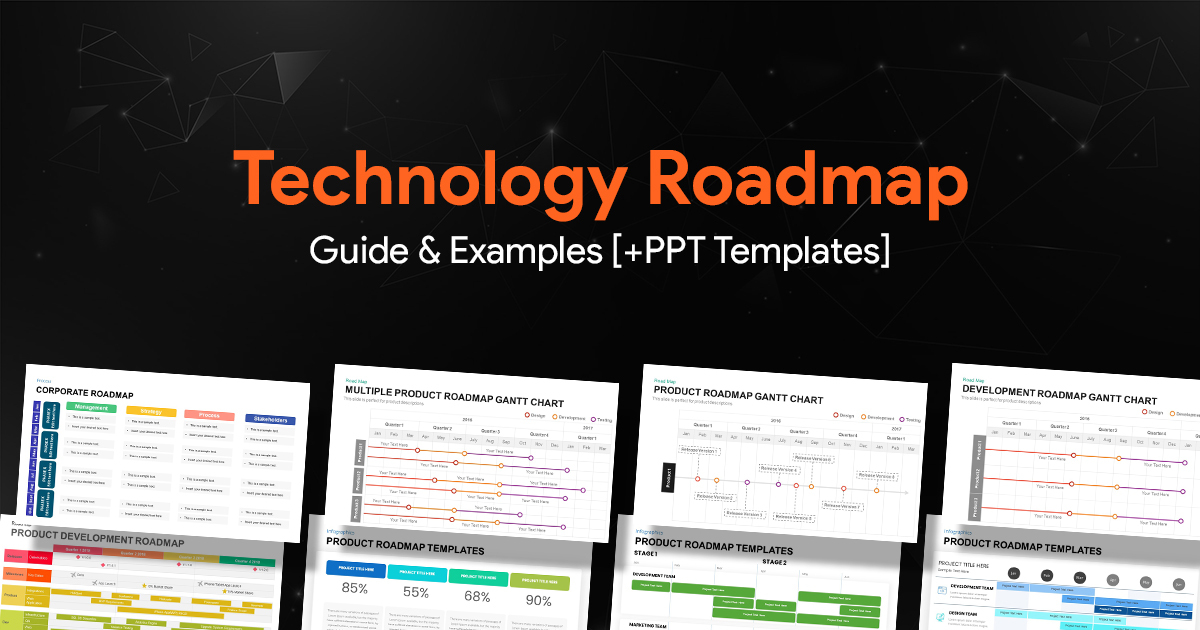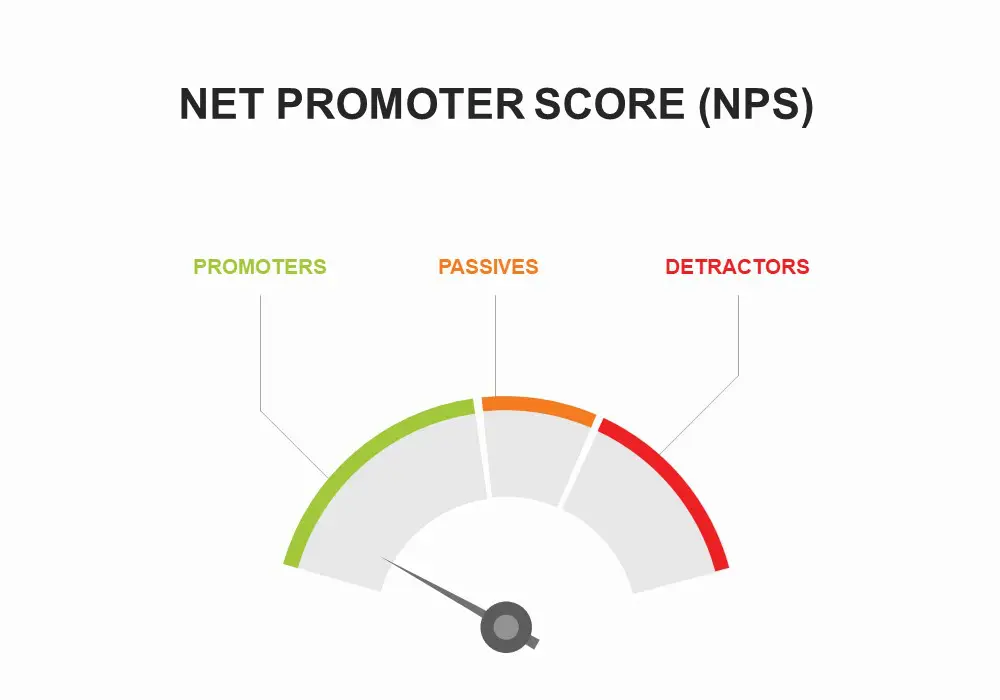How to Create a Solar System PPT: A Step-by-Step Guide

Creating a visually appealing solar system PPT doesn’t have to be challenging. This guide walks you through the process of designing a compelling solar system presentation in PowerPoint, complete with engaging visuals and smooth transitions. Follow these steps to craft a stunning presentation that captures the wonder of our solar system.
In case you’d rather watch a video, here’s a super simple tutorial that you can watch. More videos like this on our YouTube channel, so check them out as well:
Instead, if you prefer reading an article with step-by-step instructions, keep reading:
Step 1: Set the Background
Begin with a blank slide. To add a background:
Right-click on the slide and select Format Background.
Under Fill, choose Picture and click Insert to select a suitable image for your background.
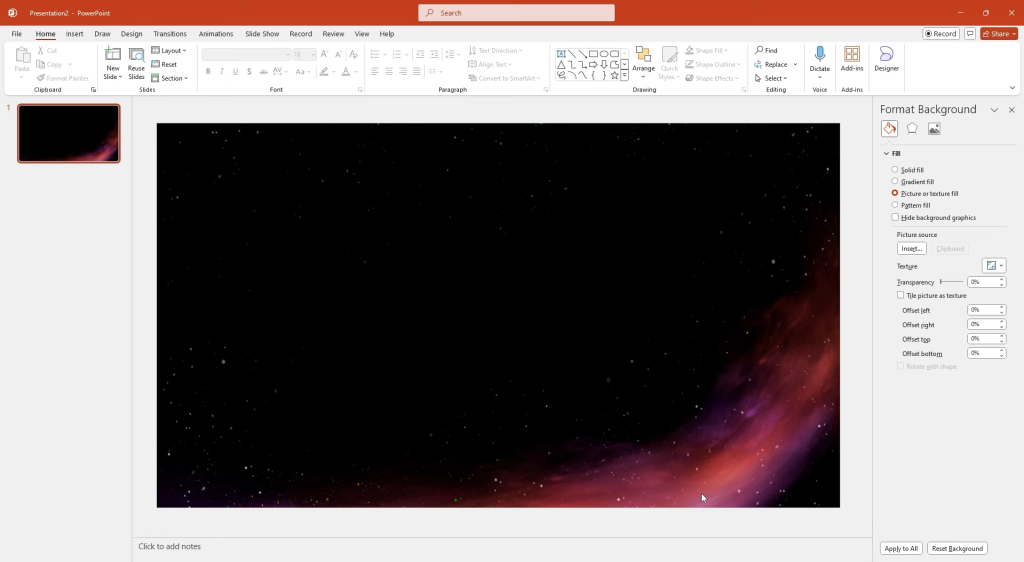
This sets the tone for your presentation, giving it the right look. So make sure you choose a high quality image as a wallpaper that will look amazing as the background.
Step 2: Create the Title Slide
Let’s take a look at how I crated the title slide for my solar system presentation.
Insert a text box from the Shapes menu to add your title.
Adjust the font size, color, and placement to make the text stand out:

Select the text, go to the Home tab, and use the Arrange options to align the title to the center and middle of the slide.
Your title slide should clearly convey the theme of your solar system PPT.
Step 3: Add 3D Models of Planets
Duplicate the title slide by right-clicking it in the slide overview pane and selecting Duplicate Slide or pressing Ctrl + D.

On the new slide, remove the title text.
Go to Insert > 3D Models and search for planets like Earth, Pluto, and the Sun.
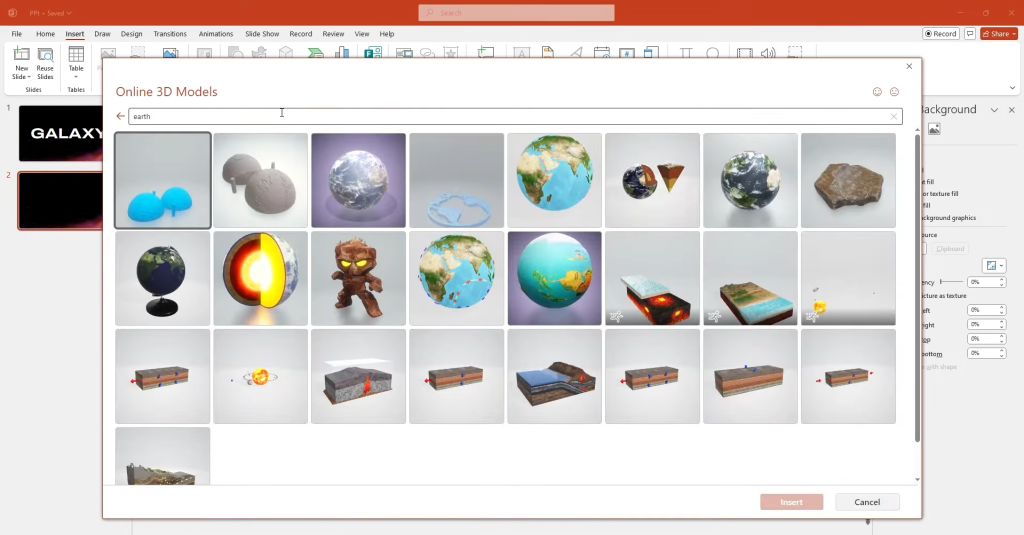
Insert the models and resize them using the corner handles.
Arrange and distribute the models horizontally for a balanced layout.
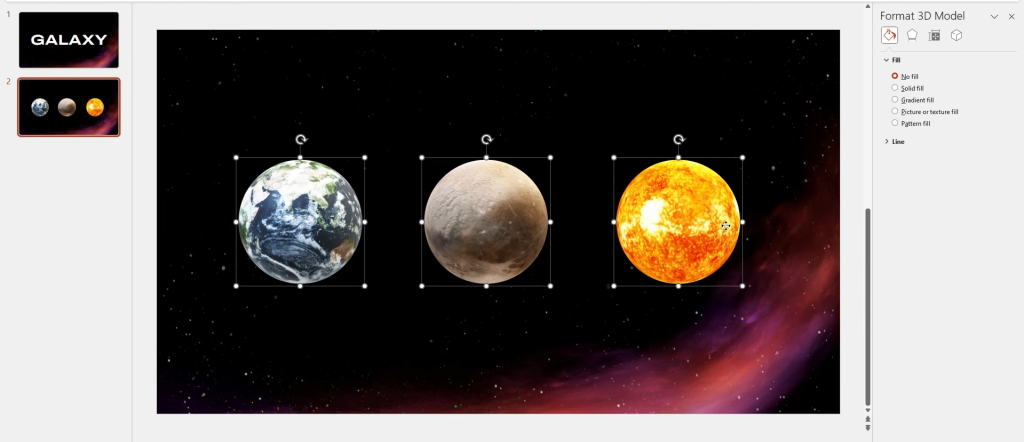
Adding 3D elements enhances the visual appeal and interactivity of your solar system presentation. Don’t forget to go to Insert and add some Text Boxes under the 3D objects.
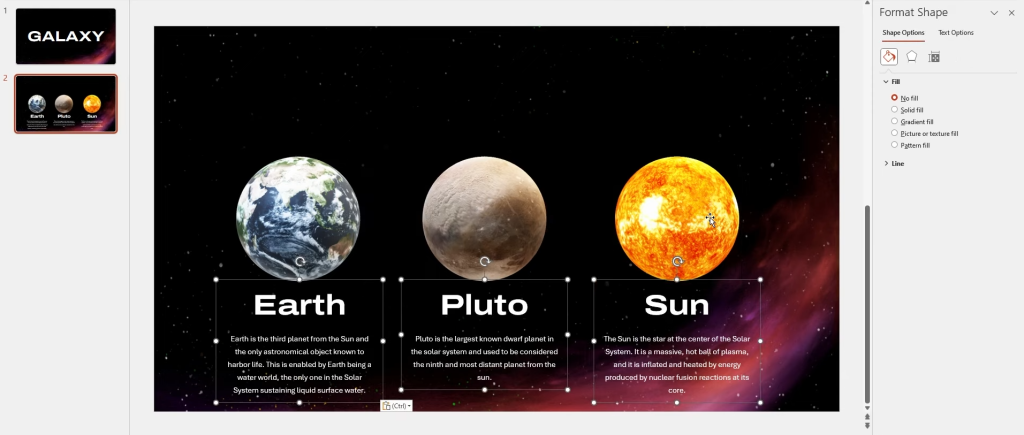
Finally, group all the text boxes and 3D shapes together, right-click and group them. Then, go to Align, and align the shape in the center and middle.
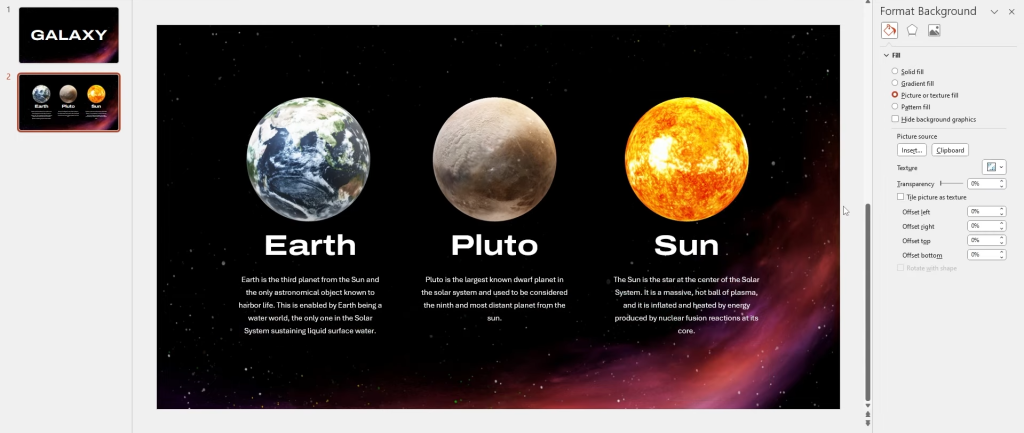
Now, let’s create more slides, but this time focusing on one planet at a time.
Step 4: Design Focused Slides for Each Planet
Duplicate the slide with the planets.
Remove unnecessary elements and reposition a single planet (e.g., Earth) for emphasis.
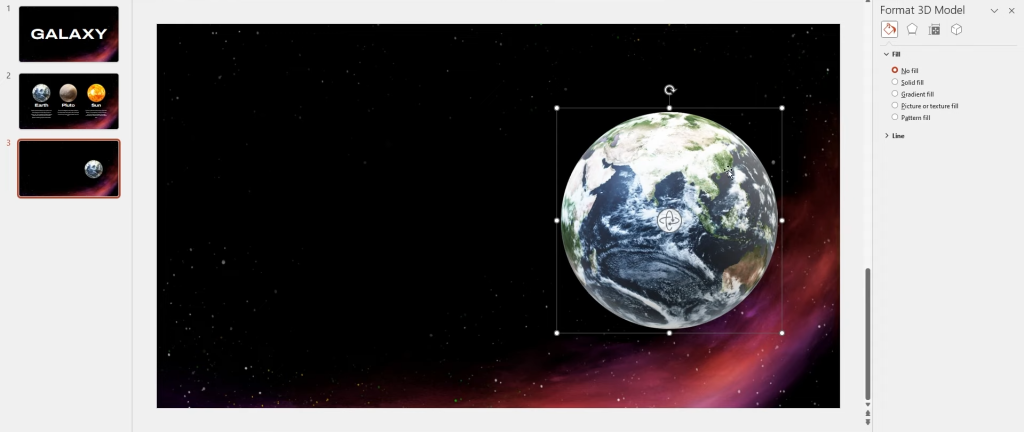
Add text to describe the featured planet, placing it strategically beside the 3D model.
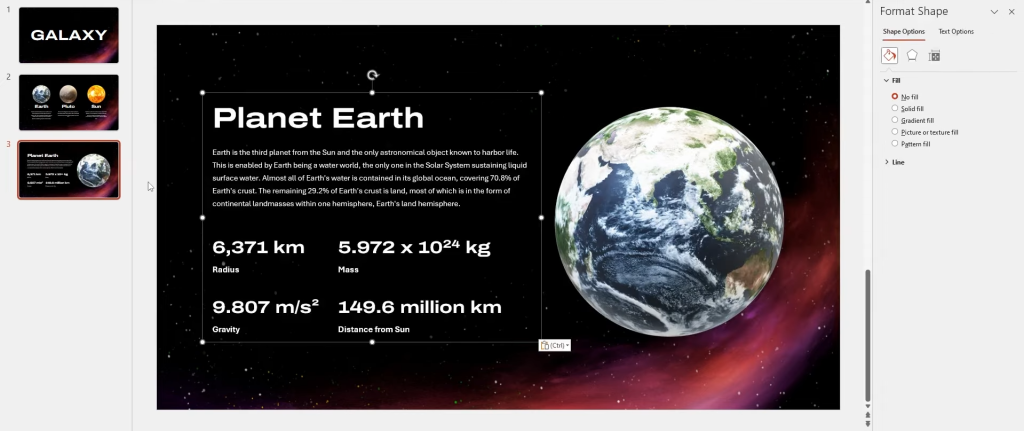
Repeat this process for each planet, creating individual slides to explore their unique features.
Step 5: Animate with Morph Transitions
The Morph transition is a game-changer for any presentation, especially for a dynamic topic like the solar system. Here’s how to use it effectively:
Ensure that the same 3D elements are present on consecutive slides.
For example, to animate planets flying into position from Slide 2 to Slide 1.
Copy content from Slide 2 onto Slide 1.
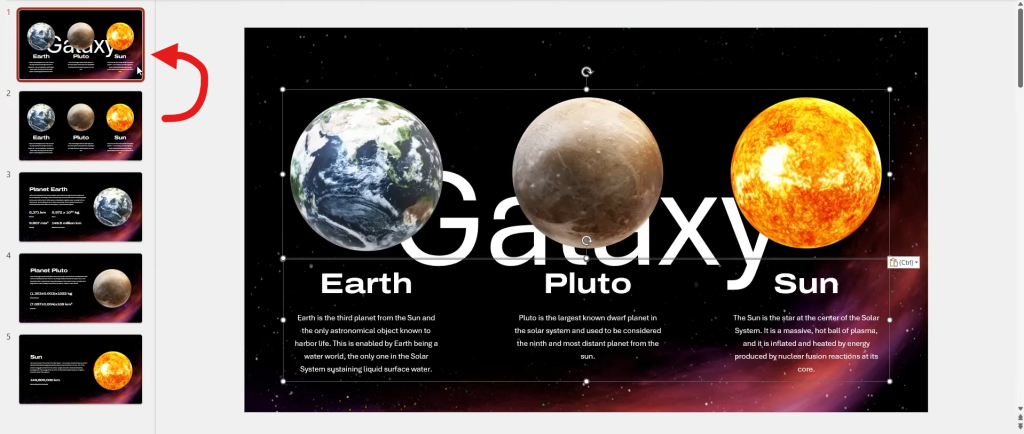
Position the 3D models on Slide 1 where you want them to start (e.g., off-screen). Don’t forget to ungroup the shape by right-clicking and selecting Ungroup.
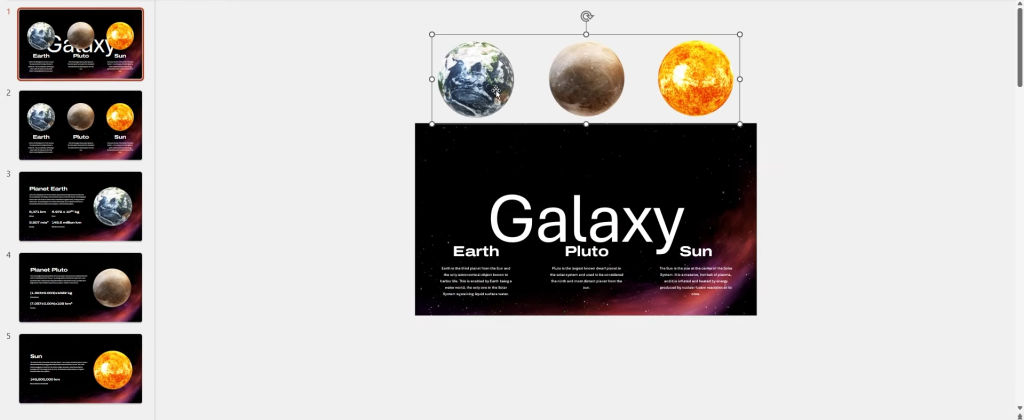
Do that for the text as well. As you can see, I’ve moved the text below the slide.
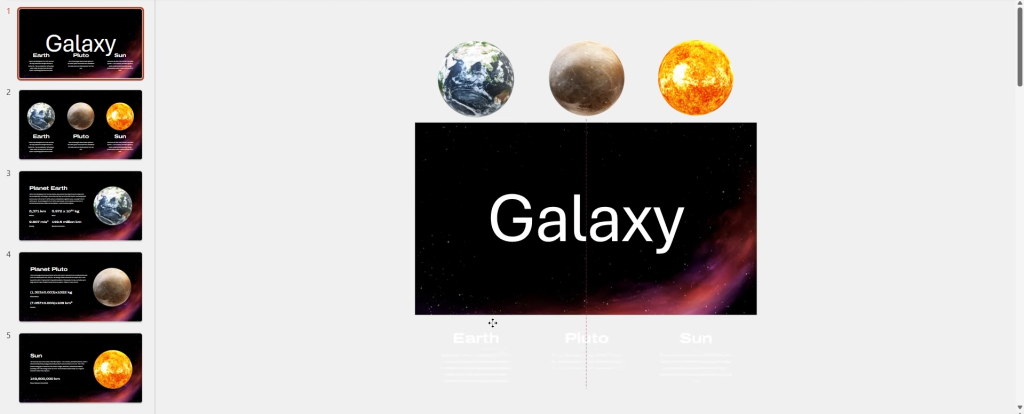
Apply the Morph transition between the slides.
Repeat this process for all slides to create smooth transitions, making your solar system PPT come alive.
For example, to enable smooth transition between Slide 2 and Slide 3. The objects on Slide 2 must be copied to Slide 3, and moved off-slide (depending on where you want them to fly). And copy the objects on Slide 3 to Slide 2 and move them them off-slide (where you want them to fly in from).

Final Touches
Once you’ve added text, visuals, and transitions, preview your slides to ensure everything aligns perfectly. By following these steps, your solar system presentation will not only educate but also captivate your audience. For a better experience, I highly suggest you also watch our video tutorial, linked at the starting of this article. If you have any doubts, feel free to drop them as a comment!
